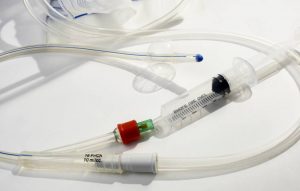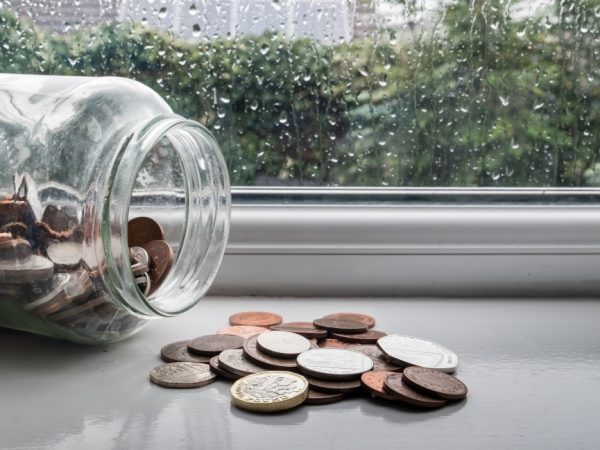Urinary catheters can be a life-changing solution for many people. Individuals often describe using the products as “liberating”. However, they can also cause other problems such as reduced self-confidence and feelings of alienation.
Long term catheterisation should be thought of as a last resort. However, for some patients, it is the best option. It is estimated that there are at least 90,000 people in the UK with long term catheters. It can often be scary to make the transition from living without one to living with one constantly. An article published in 2003 aimed to describe and interpret the lived experience of long-term users of urinary catheters. Patients reported having to adjust to embodied changes by perceiving the catheter as a “part of me”. Living with a urinary catheter also proved to provide feelings of alienation and a sense of being viewed as “different” when it was experienced a stigma. A catheter is designed to provide more freedom and convenience for those with incontinence, rather to hold people back. This negatively surrounding catheters should be minimised by specialists coaching patients in strategies to travel with a catheter and find ways to conceal the urine bag. The debate on how we can improve urinary catheters is continuous, however knowing how to take care of your catheter can make all the difference.
Are you considering getting treatment for incontinence? Read our treatment section to find out your options.

There are at least 90,000 people with long term catheters in the UK
You Can Stay in Control!
Your life should get better, rather than worse with a catheter. Knowing how your body works and how to care for your catheter is vital. 62-year-old Charles has been using a catheter for 10 years and recommends “staying on top of your own situation”. Living with a catheter can be liberating, not limiting. Follow our tips to stay on top of your situation:
Make Hygiene a Priority
It is important to keep the catheter clean and use the right hygiene procedures to feel confident and in control of your situation. The correct cleaning procedure is vital.
Follow these steps to ensure you are cleaning your urinary catheter bag properly:
- Wash your hands properly with soap and water
- Change the warm water in the container if you are using a container
- Wet the second washcloth with warm water
- Hold the catheter and begin washing the end near your vagina and penis. Move slowly down the catheter to clean it. Ensure you never clean from the bottom of the catheter toward your body
You should have been educated by a professional about the importance of hand decontamination before and after manipulation of the catheter. For supra pubic, you may need to wear a dressing around the incision site. Before you shower, you should also empty the drainage bag, but leave it connected.
If your catheter is draining well, a change every eight to 12 weeks should be appropriate. If you change your catheter too often, there is a possibility of trauma and infection.
Have Spare Catheter Equipment when Travelling
You may leak urine around the site of catheter insertion, and this may be due to a blockage. Always carry a spare urine drainage bag in case yours leaks. Even if you are travelling locally, it helps to have spare equipment for emergencies. Hospitals don’t always have the same equipment that you’re used to using. Alex, aged 40 explains how it has been convenient to “keep a drainage bag in her large handbag when going out for the day or on holiday”. When there is a need to empty her bladder, she puts her handbag next to her and connects the catheter to the bag. Alex explains, “as soon as I reach a nearby toilet, I then conveniently empty the bag or discard it”.

Urine Drainage Bag
Drink Plenty of Water
It is important for people with a long-term catheter to drink lots of water to reduce urinary tract infections and keep the bladder healthy. Unless a Doctor says otherwise, you should aim to drink 2 litres of fluid a day to help in the prevention of infection. Fluid intake should be enough to make urine look like water or only slightly yellow in colour. You might be surprised to know that drinking plenty of water can also help prevent constipation.
Know the Symptoms of an Infection
Research shows that people with long-term catheters are up to 6.5 times more likely to develop a urinary tract infection.
Signs of an infection include the following:
- Cloudy urine
- Pain around the catheter
- Fever
Other possible symptoms include nausea and vomiting, muscle aches and abdominal pains. You may also feel tired and shaky, which can be a sign the infection has reached your kidneys.
Accepting a catheter can take time. Remember that there is always someone you can talk to, whether this be an incontinence specialist or another person who uses a catheter. District nurses can be helpful You can post a question on our forum to receive answers from experts and other people with incontinence.

Originally posted 2018-07-17 15:38:47.












I am curious to know if this is a common factor with an indwelling catheter firstly I find it has a pulling feeling and twice this awful feeling the catheter worked it’s way out not only once but twice I have poor muscle control as have nerve damage down my left side due to ms when I initially had my first second catheter I never had this problem also my catheters by passed a lot so I had to wear pads along side this which I felt defeated the purpose of having a catheter plus I’ve had infection after infection I just wondered if anyone else had this problem plus the catheter fell out the other day and I’m not sure I want it put back in after all the trouble I’ve had I’ve had so much pain with the catheter too any advice or suggestions would be welcome thanks
Hello
I’m not sure if you advise on problems encountered with long term inserted catheters but any comment would be appreciated I had an AUS for 8 years until it damaged the urethra and had to be removed UCLHospital did the procedure and have fitted a long term inserted Foley catheter while the urethra heals but perhaps at aged 85 – permanently
My problem is that being totally incontinent, I leak very badly from around the catheter so that anything I wear or my bed at night is immediately flooded and needs to be changed again and again. I’ve tried wearing pads and incontinence pants, but the urine is concentrated around the catheter tube and soon becomes drenched and starts flowing
Are there expanding catheters to create a seal or could I use a “clamp” How do other users cope